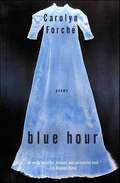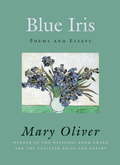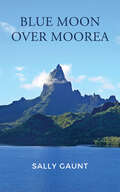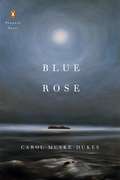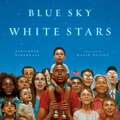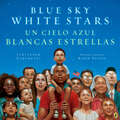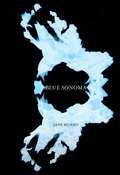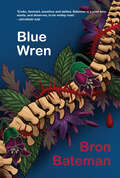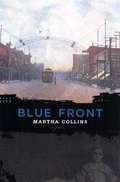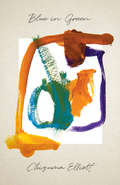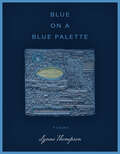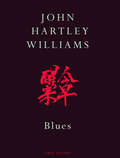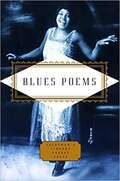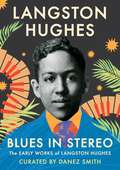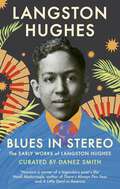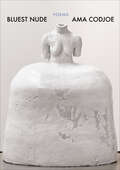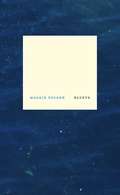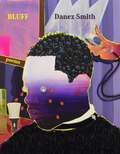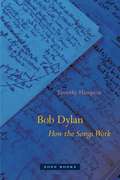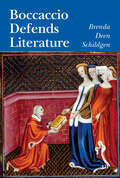- Table View
- List View
Blue Hour: Poems
by Carolyn Forché"Blue Hour is an elusive book, because it is ever in pursuit of what the German poet Novalis called 'the [lost] presence beyond appearance.' The longest poem, 'On Earth,' is a transcription of mind passing from life into death, in the form of an abecedary, modeled on ancient gnostic hymns. Other poems in the book, especially 'Nocturne' and 'Blue Hour,' are lyric recoveries of the act of remembering, though the objects of memory seem to us vivid and irretrievable, the rage to summon and cling at once fierce and distracted."The voice we hear in Blue Hour is a voice both very young and very old. It belongs to someone who has seen everything and who strives imperfectly, desperately, to be equal to what she has seen. The hunger to know is matched here by a desire to be new, totally without cynicism, open to the shocks of experience as if perpetually for the first time, though unillusioned, wise beyond any possible taint of a false or assumed innocence."-- Robert Boyers
Blue Iris
by Mary OliverFor poet Mary Oliver, nature is full of mystery and miracle. From the excitation of birds in the sky to the flowers and plants that are "the simple garments" of the earth, the natural world is her text of both the earth's changes and its permanence.In Blue Iris, Mary Oliver collects ten new poems, two dozen of her poems written over the last two decades, and two previously unpublished essays on the beauty and wonder of plants. The poet considers roses, of course, as well as poppies and peonies; lilies and morning glories; the thick-bodied black oak and the fragrant white pine; the tall sunflower and the slender bean. James Dickey has said of her, "Far beneath the surface-flash of linguistic effect, Mary Oliver works her quiet and mysterious spell. It is a true spell, unlike any other poet's, the enchantment of the true maker." In Blue Iris, she has captured with breathtaking clarity the true enchantment and mysterious spell of flowers and plants of all sorts and their magnetic hold on us.From the Hardcover edition.
Blue Laws: Selected and Uncollected Poems, 1995-2015
by Kevin YoungA rich and lively gathering of highlights from the first twenty years of an extraordinary career, interspersed with "B sides" and "bonus tracks" from this prolific and widely acclaimed poet. Blue Laws gathers poems written over the past two decades, drawing from all nine of Kevin Young's previously published books of poetry and including a number of uncollected, often unpublished, poems. From his stunning lyric debut (Most Way Home, 1995) and the amazing "double album" life of Jean-Michel Basquiat (2001, "remixed" for Knopf in 2005), through his brokenhearted Jelly Roll: A Blues (2003) and his recent forays into adult grief and the joys of birth in Dear Darkness (2008) and Book of Hours (2014), this collection provides a grand tour of a poet whose personal poems and political poems are equally riveting. Together with wonderful outtakes and previously unseen blues, the profoundly felt poems here of family, Southern food, and loss are of a piece with the depth of personal sensibility and humanity found in his Ardency: A Chronicle of the Amistad Rebels or bold sequences such as "The Ballad of Jim Crow" and a new "Homage to Phillis Wheatley."From the Hardcover edition.
Blue Moon Over Moorea
by Sally GauntIn Blue Moon over Moorea, an anthology of poems by Australian lawyer and poet Sally Gaunt, the author mines some of her favourite themes to remarkable effect. Water in all its forms proves a constant inspiration, from ‘Swimming with Seahorses’ to the rapt, almost hallucinatory images of the title poem. Gaunt breathes new life into verse written for the reading community and brings a sharp eye and wry humour to the perennial subjects of love, sex and death. Many of the poems are boldly imaginative recreations of historical events, typically centred on the sea, while the cycle of feather poems that opens the book considers the concept of manhood versus mayhem in a social setting.
Blue Rose (Penguin Poets)
by Carol Muske-DukesA new collection of emotionally rich, issue-oriented poems from an award-winning poet whose work “has long been essential reading” (Jorie Graham) Carol Muske-Dukes has won acclaim for poetry that marries sophisticated intelligence, emotional resonance, and lyrical intensity. The poems in her new collection, Blue Rose, navigate around the idea of the unattainable – the elusive nature of poetry, of knowledge, of the fact that we know so little of the lives of others, of the world in which we live. Some poems respond to matters of women, birth, and the struggle for reproductive rights, or to issues like gun control and climate change, while others draw inspiration from the lives of women who persisted outside of convention, in poetry, art, science: the painter Paula Modersohn-Becker, the scientist and X-ray crystallographer Rosalind Franklin, and the Californian poet and writer Ina Coolbrith, the first poet laureate ever appointed in America.
Blue Sky White Stars
by Sarvinder NaberhausAn inspiring and patriotic tribute to the beauty of the American flag, a symbol of America&’s history, landscape, and people, illustrated by New York Times bestselling and Caldecott-honor winning artist Kadir Nelson Wonderfully spare, deceptively simple verses pair with richly evocative paintings to celebrate the iconic imagery of our nation, beginning with the American flag. Each spread, sumptuously illustrated by award-winning artist Kadir Nelson, depicts a stirring tableau, from the view of the Statue of Library at Ellis Island to civil rights marchers shoulder to shoulder, to a spacecraft at Cape Canaveral blasting off. This book is an ode to America then and now, from sea to shining sea.
Blue Sky White Stars Bilingual Edition
by Sarvinder NaberhausAn inspiring tribute to the beauty and meaning of the American flag, a symbol of America's history and people, illustrated by New York Times bestselling and Caldecott-honor winning artist Kadir Nelson--now available with text in Spanish and English.Wonderfully spare, deceptively simple verses pair with richly evocative paintings to celebrate the iconic imagery of our nation, beginning with the American flag. Each spread, sumptuously illustrated by award-winning artist Kadir Nelson, depicts a stirring tableau, from the view of the Statue of Library at Ellis Island to civil rights marchers shoulder to shoulder, to a spacecraft at Cape Canaveral blasting off. This book is an ode to America then and now, from sea to shining sea, and is now accessible to a much larger audience in this bilingual edition.
Blue Sonoma
by Jane MunroIn Blue Sonoma, award-winning poet Jane Munro draws on her well-honed talents to address what Eliot called "the gifts reserved for age." A beloved partner’s crossing into Alzheimer’s is at the heart of this book, and his "battered blue Sonoma" is an evocation of numerous other crossings: between empirical reportage and meditative apprehension, dreaming and wakefulness, Eastern and Western poetic traditions. Rich in both pathos and sharp shards of insight, Munro's wisdom here is deeply embedded, shot through with moments of wit and candour. In the tradition of Taoist poets like Wang Wei and Po-Chu-i, her sixth and best book opens a wide poetic space, and renders difficult conditions with the lightest of touches.
Blue Wren
by Bron BatemanBlue Wren is a beautiful and moving body of work from poet Bron Bateman. Using Frida Kahlo as her inspiration, she has crafted a collection of poems that builds on the themes from Of Memory and Furniture of healing and reclaiming her past. In her new book, Bron experiments with different forms, such as magical realism, prose poetry and free verse, with many poems addressed to her lover, her sister, her children and the strong influence that her mother had on her life.
Blue front
by Martha Collins<P>A stunning account of racism, mob violence, and cultural responsibility as rendered by the poet Martha Collins the victim hanged, though not on a tree, this was not the country, they used a steel arch with electric lights, and later a lamppost, this was a modern event, the trees were not involved. --from "Blue Front" <P>Martha Collins's father, as a five-year-old, sold fruit outside the Blue Front Restaurant in Cairo, Illinois, in 1909. What he witnessed there, with 10,000 participants, is shocking. <P>In Blue Front, Collins describes the brutal lynching of a black man and, as an afterthought, a white man, both of them left to the mercilessness of the spectators. <P>The poems patch together an arresting array of evidence--newspaper articles, census data, legal history, postcards, photographs, and Collins's speculations about her father's own experience. <P>The resulting work, part lyric and part narrative, is a bold investigation into hate, mob mentality, culpability, and what it means to be white in a country still haunted by its violently racist history.
Blue in Green (Phoenix Poets)
by Chiyuma ElliottPoems that address interpersonal connections while navigating life and care amid disease and disaster. Collaboration runs through the heart of this collection. Human relationships—particularly in families—shape the poems in Blue in Green, as they consider how the question of what we expect from one another evolves into a question of what we owe. When cancer overshadows the ordinary—engrossing the labor of love, work, and friendship—disease becomes a collaborator and proposes new rules of exchange. The forms of Elliott’s works highlight reciprocity. Here you’ll find ekphrastic poems that describe modern jazz songs, letters and letter fragments, and free verse poems in wildly variable line lengths. “When I was a wave,” the speaker repeats, each time telling a different story about intimacy and risk. Blue in Green moves through the struggle of processing the damaging interpersonal reverberations of racism, sexism, and environmental damage, while navigating intertwined personal and political incarnations of care. While a slow-growing disease burns its way through the speaker’s body, these poems reveal the feeling of perpetually existing in the shadow of catastrophe and document the slow and strange process of coming to terms with that way of living.
Blue in Green (Phoenix Poets)
by Chiyuma ElliottPoems that address interpersonal connections while navigating life and care amid disease and disaster. Collaboration runs through the heart of this collection. Human relationships—particularly in families—shape the poems in Blue in Green, as they consider how the question of what we expect from one another evolves into a question of what we owe. When cancer overshadows the ordinary—engrossing the labor of love, work, and friendship—disease becomes a collaborator and proposes new rules of exchange. The forms of Elliott’s works highlight reciprocity. Here you’ll find ekphrastic poems that describe modern jazz songs, letters and letter fragments, and free verse poems in wildly variable line lengths. “When I was a wave,” the speaker repeats, each time telling a different story about intimacy and risk. Blue in Green moves through the struggle of processing the damaging interpersonal reverberations of racism, sexism, and environmental damage, while navigating intertwined personal and political incarnations of care. While a slow-growing disease burns its way through the speaker’s body, these poems reveal the feeling of perpetually existing in the shadow of catastrophe and document the slow and strange process of coming to terms with that way of living.
Blue on a Blue Palette
by Lynne ThompsonLynne Thompson’s Blue on a Blue Palette reflects on the condition of women—their joys despite their histories, and their insistence on survival as issues of race, culture, pandemic, and climate threaten their livelihoods. The documentation of these personal odysseys—which vary stylistically from abecedarians to free verse to centos—replicate the many ways women travel through the stages of their lives, all negotiated on a palette encompassing various shades of blue. These poems demand your attention, your voice: “Say history. Claim. Say wild.”
Blue-Tail Fly: Blue-tail Fly
by Vievee FrancisA poetic treatment of the period of American history between the beginning of the Mexican War and the end of the Civil War, by Michigan poet Vievee Francis.
Blues
by John Hartley WilliamsSubversive and satirical, inventive, wry and unconventional, John Hartley Williams has long been celebrated for his maverick sensibility, for his outsider's take on the way we live our lives. In Blues, his eighth collection, he focuses with new directness on the turmoil of Germany and Eastern Europe, and writes eloquently about being English, and staying English, in a continental climate, through all the upheavals of the last fifteen years. Alert to the intricacies and ironies of the language, to the musculature of politics and passion, these poems are chronicles of change, wired to the energies of jazz and science fiction, yet the under-song is a threnody for the loss of a kind of Englishness - voiced powerfully in a moving elegy for the poet Ken Smith. While there is no diminishing of his comic brio, no dulling of his incisive, questioning intelligence, Blues finds John Hartley Williams taking on subjects of new depth and complexity - while maintaining his characteristic lightness of touch, imagination and profound originality.
Blues Journey
by Walter Dean MyersThe African experience in America is celebrated with a soulful, affecting blues poem that details the long journey from the Middle Passage to life today.
Blues Poems
by Kevin YoungBorn in African American work songs, field hollers, and the powerful legacy of the spirituals, the blues traveled the country from the Mississippi delta to “Sweet Home Chicago,” forming the backbone of American music. In this anthology–the first devoted exclusively to blues poems–a wide array of poets pay tribute to the form and offer testimony to its lasting power. <p><p> The blues have left an indelible mark on the work of a diverse range of poets: from “The Weary Blues” by Langston Hughes and “Funeral Blues” by W. H. Auden, to “Blues on Yellow” by Marilyn Chin and “Reservation Blues” by Sherman Alexie. Here are blues-influenced and blues-inflected poems from, among others, Gwendolyn Brooks, Allen Ginsberg, June Jordan, Richard Wright, Nikki Giovanni, Charles Wright, Yusef Komunyakaa, and Cornelius Eady. And here, too, are classic song lyrics–poems in their own right–from Bessie Smith, Robert Johnson, Ma Rainey, and Muddy Waters. <p> The rich emotional palette of the blues is fully represented here in verse that pays tribute to the heart and humor of the music, and in poems that swing with its history and hard-bitten hope.
Blues in Stereo: The Early Works of Langston Hughes
by Langston HughesPublishers Weekly&’s Top Ten Fall 2024 Poetry Books From Harlem Renaissance poet Langston Hughes, a stunning collection of early works—both polished poems andraw, unfinished, works-in-progress written from 1921-1927—curated by award winning poet and National Book Award finalist, Danez Smith. Before Langston Hughes and his literary prowess became synonymous with American poetry, he was an eighteen-year-old on a train to Mexico City, seeking funds to pursue his passion. His early poems see Hughes finding his voice and experimenting with style and form. Beloved verses like &“The Negro Speaks of Rivers,&” were written without formal training, often on the back of napkins and envelopes, and were inspired by the sights and sounds of Black working-class people he encountered in his early life. Blues in Stereo is a collection of select early works, all written before the age of twenty-five, in which we see Langston Hughes with fresh eyes. From the intimate pages of his handwritten journals, you will travel with Hughes outside of Harlem as he ventures to the American South and Mexico, sails through the Caribbean, and becomes the only Harlem renaissance poet to visit Africa. His poems and journal entries celebrate love as a tool of liberation. His songs showcase the musicality of verse poetry. And the collection even includes a play he cowrote with Duke Ellington with a full score that experiments with rhythm and structure.Blues in Stereo portrays a young man coming of age in a changing world. Page by page, a young, fresh-faced Hughes contends with matters beyond his years with raw talent. And by keeping his original, handwritten notations found in archival material, we get to witness a genius&’s earliest thought process in real time. National Book Award-nominated poet Danez Smith offers their insight and notes on themes, challenges, and obsessions that Hughes early work contains. Beautifully rendered and thoughtfully curated, Blues in Stereo foreshadows a master poet that will go on to define literature for centuries to come.
Blues in Stereo: The Early Works of Langston Hughes
by Langston HughesPublishers Weekly's Top Ten Fall 2024 Poetry BooksBefore Langston Hughes and his literary prowess became synonymous with American poetry, he was an eighteen-year-old on a train to Mexico City, seeking funds to pursue his passion. His early poems, beloved verses like "The Negro Speaks of Rivers," were written without formal training, often on the back of napkins and envelopes, and were inspired by the sights and sounds of Black working-class people he encountered in his early life.Blues in Stereo is a posthumous collection of these early works, in which we see Langston Hughes like we've never seen him before. In the intimate pages of his handwritten journals, you will travel with Hughes outside of Harlem as he ventures to the American South and Mexico, sails through the Caribbean, and becomes the only Harlem renaissance poet to visit Africa. He celebrates love as a tool of liberation in his poems and journal entries. His songs included showcase musicality of verse poetry. And the book even includes a play he co-wrote with Duke Ellington with a full score that experiments with rhythm and structure.Blues in Stereo portrays a young man coming of age in a changing world. Page by page, a young, fresh-faced Hughes contends with matters beyond his years with raw talent. National Book Award nominated poet Danez Smith offers their insight and notes on themes, challenges, and obsessions that Hughes early work contains. Blues in Stereo foreshadows a master poet that will go on to define literature for centuries to come.
Bluest Nude: Poems
by Ama CodjoeAma Codjoe’s highly anticipated debut collection brings generous light to the inner dialogues of women as they bathe, create art, make and lose love. Each poem rises with the urgency of a fully awakened sensual life. Codjoe’s poems explore how the archetype of the artist complicates the typical expectations of women: be gazed upon, be silent, be selfless, reproduce. Dialoguing with and through art, Bluest Nude considers alternative ways of holding and constructing the self. From Lorna Simpson to Gwendolyn Brooks to Lynette Yiadom-Boakye, contemporary and ancestral artists populate Bluest Nude in a choreography of Codjoe’s making. Precise and halting, this finely wrought, riveting collection is marked by an acute rendering of highly charged emotional spaces. Purposefully shifting between the role of artist and subject, seer and seen, Codjoe’s poems ask what the act of looking does to a person—public looking, private looking, and that most intimate, singular spectacle of looking at one’s self. What does it mean to see while being seen? In poems that illuminate the tension between the possibilities of openness and and its impediments, Bluest Nude offers vulnerability as a medium to be immersed in and, ultimately, shared as a kind of power: “There are as many walls inside me / as there are bones at the bottom of the sea,” Codjoe writes in the masterful titular poem. “I want to be seen clearly or not at all.” “The end of the world has ended,” Codjoe’s speaker announces, “and desire is still / all I crave.” Startling and seductive in equal measure, this formally ambitious collection represents a powerful, luminous beginning.
Bluets
by Maggie NelsonSuppose I were to begin by saying that I had fallen in love with a color . . .A lyrical, philosophical, and often explicit exploration of personal suffering and the limitations of vision and love, as refracted through the color blue. With Bluets, Maggie Nelson has entered the pantheon of brilliant lyric essayists.Maggie Nelson is the author of numerous books of poetry and nonfiction, including Something Bright, Then Holes (Soft Skull Press, 2007) and Women, the New York School, and Other True Abstractions (University of Iowa Press, 2007). She lives in Los Angeles and teaches at the California Institute of the Arts.
Bluff: Poems
by Danez SmithWritten after two years of artistic silence, during which the world came to a halt due to the COVID-19 pandemic and Minneapolis became the epicenter of protest following the murder of George Floyd, Bluff is Danez Smith’s powerful reckoning with their role and responsibility as a poet and with their hometown of the Twin Cities. This is a book of awakening out of violence, guilt, shame, and critical pessimism to wonder and imagine how we can strive toward a new existence in a world that seems to be dissolving into desolate futures. Smith brings a startling urgency to these poems, their questions demanding a new language, a deep self-scrutiny, and virtuosic textual shapes. A series of ars poetica gives way to “anti poetica” and “ars america” to implicate poetry’s collusions with unchecked capitalism. A photographic collage accrues across a sequence to make clear the consequences of America's acceptance of mass shootings. A brilliant long poem—part map, part annotation, part visual argument—offers the history of Saint Paul’s vibrant Rondo neighborhood before and after officials decided to run an interstate directly through it.Bluff is a kind of manifesto about artistic resilience, even when time and will can seem fleeting, when the places we most love—those given and made—are burning. In this soaring collection, Smith turns to honesty, hope, rage, and imagination to envision futures that seem possible.
Blütenlesen. Poetiken des Vegetabilen in der Gegenwartslyrik (Kontemporär. Schriften zur deutschsprachigen Gegenwartsliteratur #16)
by Yvonne Al-Taie Evelyn DueckLieß Brechts zum Diktum gewordenes Versfragment «Gespräch über Bäume» die Naturlyrik zum fragwürdigen Genre werden, so rief es gleichwohl bald Widerspruch hervor, nicht nur in Paul Celans lyrischer Replik «Ein Blatt, baumlos» und den ebenfalls auf Brecht antwortenden Gedichten Erich Frieds und Günter Eichs, sondern auch in der engagierten ökokritischen Dichtung seit den 1970er Jahren. Während das «Gespräch über Bäume» vor allem auf Natur und Landschaft als Gegenstand und Thema von Dichtung bezogen ist, fragt dieser Sammelband, wie das gegenwärtige Interesse an der Natur mit Formfragen und deren poetologischen Reflexionen in der deutschsprachigen Lyrik seit den 1990er Jahren einhergeht. Wie verbinden sich diese Formfragen und ihre poetologischen Reflexionen in der Gegenwart mit einem diachron weitgefassten Blick auf Ornamente und Schreibweisen wie Arabesken und Grotesken, Gattungsbezeichnungen wie Silven oder Florilegien, arboreale und mykologische Strukturmodelle wie Baumdiagramme, Rhizome oder Myzele, die auf vegetabile Formvorbilder zurückgreifen? Wie lassen sich diese Darstellungen des Vegetabilen in der Dichtung auf naturwissenschaftliche Verfahren der Sichtbarmachung oder das morphologische und botanische Wissen über Bau- und Formprinzipien der Pflanzen beziehen? Von diesen Beobachtungen ausgehend fragen die Beiträge dieses Bandes, welche Poetologien des Vegetabilen die deutschsprachige Gegenwartslyrik ausgebildet hat und wie sich darin botanisches Wissen, medienkritisches Bewusstsein und ästhetisches Naturerleben zu neuen dichterischen Formen verschränken.
Bob Dylan: How the Songs Work
by Timothy HamptonA career-spanning account of the artistry and politics of Bob Dylan’s songwritingBob Dylan’s reception of the 2016 Nobel Prize for Literature has elevated him beyond the world of popular music, establishing him as a major modern artist. However, until now, no study of his career has focused on the details and nuances of the songs, showing how they work as artistic statements designed to create meaning and elicit emotion. Bob Dylan: How the Songs Work (originally published as Bob Dylan's Poetics) is the first comprehensive book on both the poetics and politics of Dylan’s compositions. It studies Dylan, not as a pop hero, but as an artist, as a maker of songs. Focusing on the interplay of music and lyric, it traces Dylan’s innovative use of musical form, his complex manipulation of poetic diction, and his dialogues with other artists, from Woody Guthrie to Arthur Rimbaud. Moving from Dylan’s earliest experiments with the blues, through his mastery of rock and country, up to his densely allusive recent recordings, Timothy Hampton offers a detailed account of Dylan’s achievement. Locating Dylan in the long history of artistic modernism, the book studies the relationship between form, genre, and the political and social themes that crisscross Dylan’s work. Bob Dylan: How the Songs Work offers both a nuanced engagement with the work of a major artist and a meditation on the contribution of song at times of political and social change.
Boccaccio Defends Literature
by Brenda Deen SchildgenIn Boccaccio Defends Literature, Brenda Deen Schildgen contends that Giovanni Boccaccio’s significant contribution to literary history remains underappreciated. The book asserts that Boccaccio refuted the detractors that condemned poetry as immoral, irrational, and even demonic, highlighting instead its aesthetic and cathartic ability to restore equilibrium, provoke thought, and provide solace and entertainment. The book explores how, despite often being dismissed for his morally dubious tales, Boccaccio dedicated himself to defending the legacy of the ancients, endorsing vernacular and secular literature, and cementing the reputations of Dante and Petrarch. It reveals how he forged a wholly new direction for literary prose fiction, driven by his commitment to humanistic studies and admiration for literary achievement. Without moral or spiritual hesitation, Boccaccio asserted that literature – whether pagan or Christian – was an autonomous form of knowledge, a stance he maintained from the 1350s to the end of his life. Contesting the arguments of moralists who sought to ban books, Schildgen demonstrates that Boccaccio advocated for the independence of readers, asserting that they, not writers, bore the responsibility for their responses to literature. Boccaccio Defends Literature thus unveils Boccaccio as a steadfast defender of the enduring relevance of literature.
